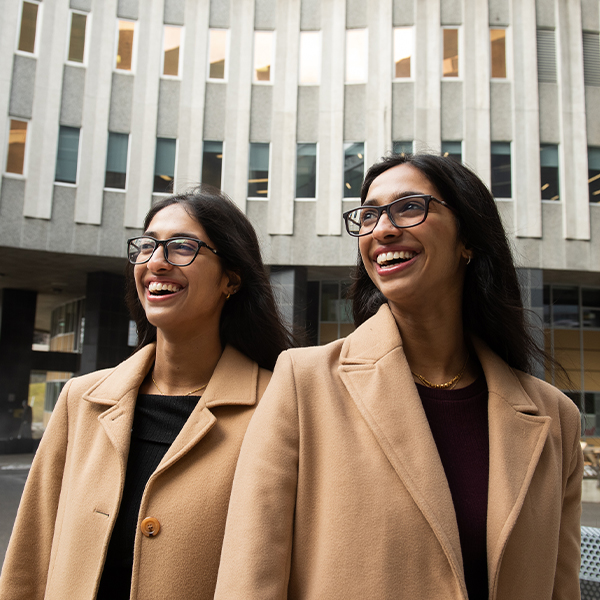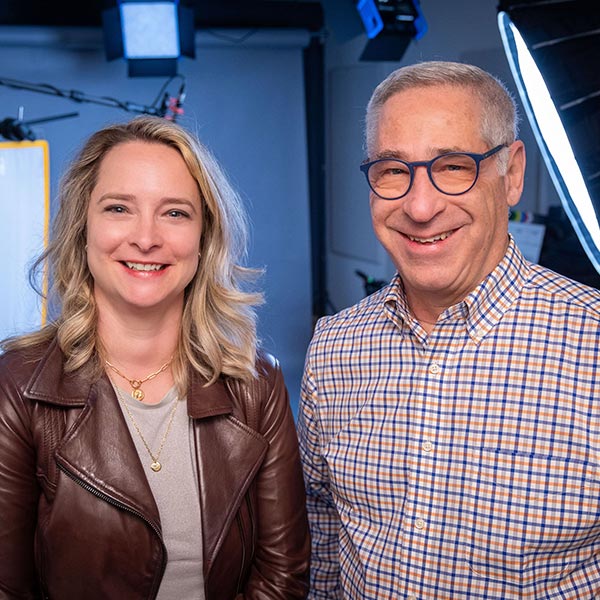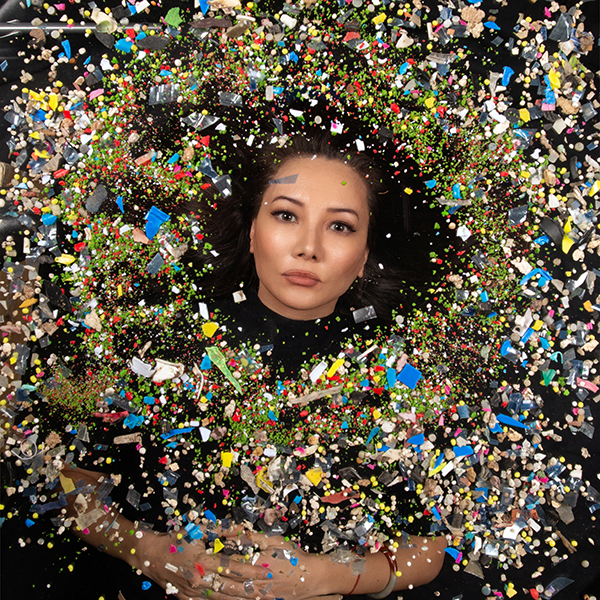Of the many lessons the COVID-19 pandemic might have taught us, here’s another: It’s a good idea for scientists to share their research.
At the center of the global scientific response to the pandemic was an “open science” philosophy. The genome of the virus was openly shared, and researchers freely exchanged ideas, expertise, and data. As a result, vaccines were developed in record time.
In February 2020, the federal government published its Roadmap for Open Science to accelerate scientific progress, reduce barriers, encourage diversity, and advance collaboration. And 2023 is now the Year of Open Science, as declared by NASA, the U.S. White House, and a coalition of more than 85 universities.
The Montreal Neurological Institute-Hospital (“The Neuro”) was well ahead of the curve — it became an open science institute in 2016. A $20-million gift from the Larry and Judy Tanenbaum family helped The Neuro establish the Tanenbaum Open Science Institute, with the dual aim of accelerating the sharing of neurological research and encouraging other neuroscience institutions to embrace open science principles.
The Neuro defines open science as “the concept of sharing data, information, tools, and research results, and eliminating barriers to collaboration in order to accelerate discovery.” By adopting open science principles, researchers can replicate and build on each others’ work, avoid repeating mistakes, and move forward in the search for treatments and cures.
Our most complex organ
Open science is especially critical for the study of the brain.
Unlike recent progress in other areas of medical research, there have been no major breakthroughs in the treatment of neurological disorders for many years. Diseases of the brain are highly complicated and still not entirely understood. After all, the brain is our most complex organ, with billions of nerve cells and trillions of connections. As well, a researcher can examine your blood, saliva, urine, or stool fairly easily, but accessing your brain tissue is another matter entirely.
And as the global population continues to age (by 2030, it’s projected that one in six people in the world will be age 60 or older), neurological disorders such as dementia and stroke will affect more and more of us.
“Neurological diseases are so complex we need to have a collective effort, if we want to make scientific discoveries,” says Guy Rouleau, director of The Neuro and co-founder of the Tanenbaum Open Science Institute.
He notes that the main motivation for The Neuro’s adoption of open science in 2016 was the decades-long lack of progress in finding transformative new treatments.
“The reason for that is obvious — the brain is very complicated, and we don’t understand it as well as we do other parts of the body,” says Rouleau, who serves as chair of McGill’s Department of Neurology and Neurosurgery, as well as chair of the Department of Neuroscience at the McGill University Health Centre.
While drugs have been developed that can improve some of the symptoms of neurological disorders, “in general, the disease just marches on,” says Rouleau. “How can we accelerate knowledge and understanding of the brain? The best way is to share.”
A coalition of the willing
The Neuro’s transformation to an open science institute took time — there were multiple discussions, presentations, surveys, and retreats to win people over and figure out how it would work in real life.
“You can’t just wake up one day and say we’re going to be open,” says Rouleau, who credits McGill’s senior administration for their support of the pioneering initiative. And while open science principles have now been adopted broadly across The Neuro, Rouleau notes it’s not mandatory. “It’s a coalition of the willing.”
A switch to open science also takes extra funds to pay for the time, talent, and tools needed for a new way of working. “It costs money to be open,” says Rouleau. “What we’ve tried to do is build tools that others can use freely and openly.”
One such tool is The Neuro’s Clinical Biospecimen Imaging and Genetic (C-BIG) Repository, one of the largest biorepositories of neurological disorders in the world.
Through C-BIG, researchers have access to the biological samples and clinical, imaging and genetics data of 3,500 de-identified neurology patients. This allows the global biomedical community to better investigate the biology of neurological diseases, helping to accelerate the development of effective treatments. Now in its seventh year, C-BIG is participating in 88 scientific collaborations, up from six in its first three years.
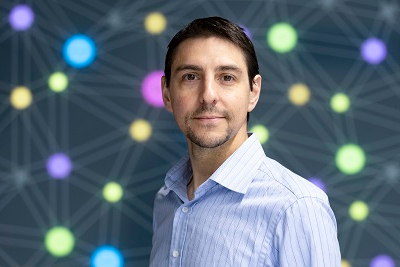
Photo: Christinne Muschi
“We’re on an exponential trajectory of growth,” says Jason Karamchandani, C-BIG’s scientific director. He states that C-BIG is the world’s first (and currently only) open science “combined patient registry and biorepository.”
C-BIG feeds another open science initiative at The Neuro, the Early Drug Discovery Unit, which brings together researchers and industry partners to identify molecular targets that hold promise for the drug development process.
But isn’t science already “open”?
Karamchandani emphasizes that C-BIG is not only a biorepository — it’s also a patient registry. This is especially helpful for matching a patient who has a rare disease with a research study or clinical trial, regardless of where the patient is in the world.
After Karamchandani has explained The Neuro’s open science policy to patients, the most common question he hears is: Isn’t all science like this?
“Most patients assume that the scientist will do everything in their power to use the data to advance the understanding of the disease,” he says. “In the traditional model, that is not necessarily the case.”
Traditionally, much of scientific research has been conducted in a proprietary way, with little incentive to share. Awards, promotion, and tenure are generally based on factors such as the number (and prestige) of publications and the number of patents obtained for potential commercialization purposes, for example.
Karamchandani describes The Neuro’s approach as “patient-centered research” — he encourages neurology patients to share their data on C-BIG. With funding from Brain Canada, the initiative is in the process of developing a virtual consent platform. The goal is to increase the biobank’s participants from 3,500 to 10,000.
Partnering with patients
“Open science is an opportunity to take an active role in your care,” says Ingrid Kovitch, MDCM’93. She’s a mother of four and a family physician who often worked in a Cree community in northern Quebec. She’s also living with a rare neuromuscular disease.
A former marathon runner, Kovitch now uses leg braces and canes to walk and a machine to help her breathe when she lies down. She’s suffered a cardiac arrest and has gone to the ICU many times in recent years. Now chair of the Patients’ Committee for The Neuro, Kovitch has offered her biological samples, genetic data, and clinical story to C-BIG.
“Open science is an enormous paradigm shift,” she says, applauding The Neuro for its dedication to working openly for the benefit of their patients.
“Every patient who donates a biological sample, a tissue sample, or genetic data should feel incredibly proud to be involved in this phenomenal movement,” says Kovitch. “We’re going to reap the rewards far faster than we would through any other channel.”
A “Consumer Reports” for antibodies
Another of The Neuro’s open science initiatives is making sure that antibodies actually work the way they should.
“It’s estimated that we waste $1 billion a year on bad antibodies,” says Peter McPherson, Distinguished James McGill Professor of Neurology and Neurosurgery. “Worse, we use those bad antibodies to draw important conclusions that lead to mistakes and problems with scientific reproducibility.”
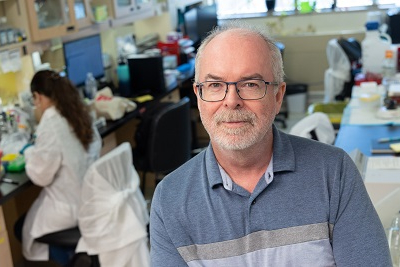
In 2019, McPherson co-founded a public interest, open science company named YCharOS — “Antibody Characterization through Open Science.” (Y represents the chemical shape of an antibody.) McPherson’s lab at McGill conducts the scientific work that validates antibodies provided by biological supply companies.
“We think of our initiative as consumer protection,” says McPherson, who also serves as director of McGill’s Neurodegenerative Disease Research Group. “We’re the ‘Consumer Reports’ of antibodies.”
Unlike the real Consumer Reports, YCharOS data is placed in the public domain, free of charge, with no restrictions. If the tests on their antibodies are successful, the biological supply companies receive a third-party, scientific stamp of approval — “As validated by YCharOS at McGill University” — which they can use to promote their products.
The initiative fills an important gap in the biomedical world. Commercially available antibodies are key reagents in laboratory research, with global sales estimated to be $2-3 billion USD. However, no independent, state-of-the-art quality assessment body existed prior to YCharOS. As a result, many antibodies on the market were not performing as stated.
“The problem of bad antibodies is not unfamiliar,” says McPherson. Whenever he offers a presentation on the topic to other scientists, “everybody in the room goes, I know what you’re talking about.” Research papers are routinely marred, due to inadvertently using antibodies that don’t work as marketed.
“Our approach is absolutely dependent on open science,” says McPherson, noting that the initiative would never have gained the trust of biological supply companies without all work being conducted in an open and transparent manner. McPherson also credits the scientific excellence of his team at McGill, led by research associate Carl Laflamme.
In 2021, YCharOS won the Neuro-Irv and Helga Cooper Foundation Open Science Prize, an international award that recognizes “projects, services, tools, and platforms that unlock the power of Open Science in neuroscience.”
YCharOS works with major disease foundations, such as the Michael J. Fox Foundation for Parkinson’s Research, to validate antibodies for the foundations’ specific needs. To date, McPherson’s lab has tested close to 750 antibodies against 75 disease genes. He notes that 13 per cent of the antibodies they have tested have since been removed from the market by their manufacturers, and 38 per cent have received revised recommendations.
“And that is good,” says McPherson. “This is a public good.”
Spreading the good word
“Science is a fundamentally social phenomenon,” says Dylan Roskams-Edris, BSc’12, open science alliance officer at the Tanenbaum Open Science Institute (TOSI). He spends his days convincing other Canadian neuroscience research institutes to join The Neuro in the open science movement.
TOSI offers both short- and long-term support. That can range from funding seed projects that help introduce the concept of open science into an organization, to infrastructure support to build a new database, to long-term expertise that ensures the buy-in of all stakeholders from scientists to technicians to librarians to senior management. Once the institution successfully becomes a “TOSI-approved open science institute”, TOSI provides annual funding of $45,000.
After The Neuro became an open science institution in 2016, two others — first, the University of Calgary’s Hotchkiss Brain Institute and then the McGill-affiliated Douglas Research Centre — adopted open science principles. They have since been joined by the Djavad Mowafaghian Centre for Brain Health at the University of British Columbia and the Institute for Neuroscience and Neurotechnology at Simon Fraser University.
Researchers at The Neuro are also collaborating on an open science partnership with Western University’s Schulich School of Medicine and Dentistry to identify promising neurodegenerative therapeutics more quickly and efficiently.
“The ideal is that every neuroscience research institute in Canada recognizes that sharing and collaboration and transparency are the biggest strengths within science,” says Roskams-Edris.
The final frontier
Private donors, foundations, and government funders all push for open science, says Guy Rouleau. In fact, many funders now require recipients to follow open science principles. Most researchers are also on board, Rouleau adds.
Universities and research institutions are “the final frontier,” he says. Rouleau explains that Canadian universities are measured in part by how many patents they create, which results in bureaucratic hurdles, lengthy delays, legal expenses, and ultimately, barriers to collaboration. “Since we’ve adopted open science, we’ve never had so many spin-off companies,” says Rouleau. “If you get rid of those barriers, you facilitate collaboration which is super important in this world of increasingly complex problems.”
He notes that the younger generation of scientists are already proponents of open science. As well, new initiatives are underway to change the promotion and tenure process to reward accomplishments and contributions achieved by adopting open science principles.
“We’re trying to lead the way in helping to draw the map of how to become open,” says Rouleau. “Why? Because we believe it’s the right thing to do.”
